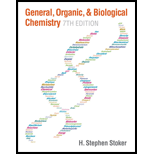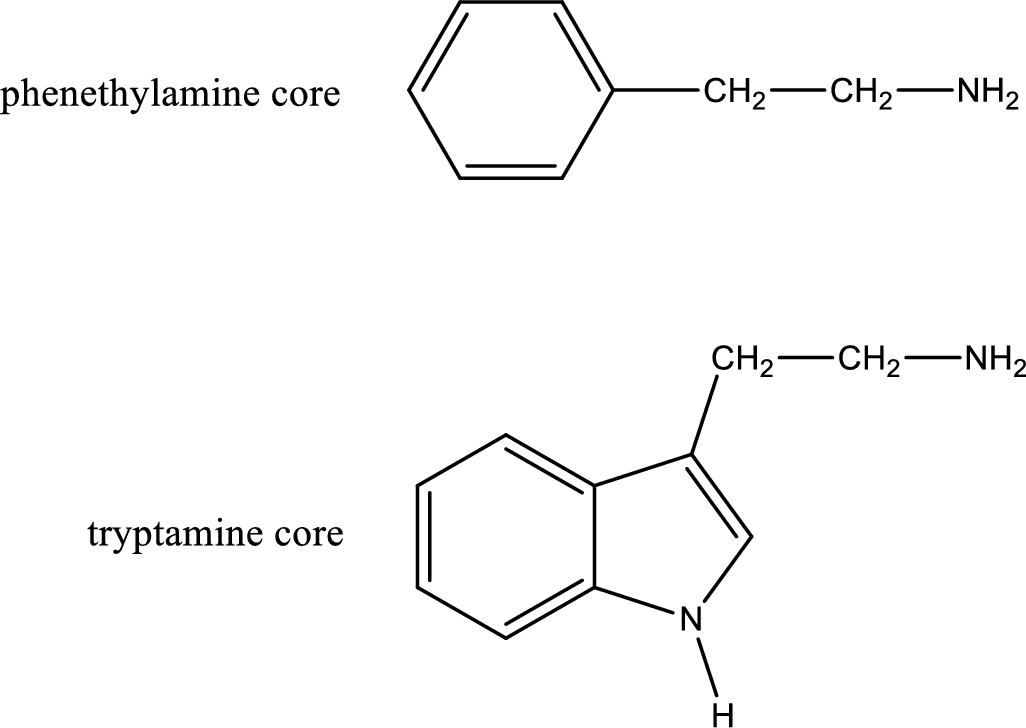
Concept explainers
Interpretation:
Among the given physiologically active
Concept Introduction:
Generally amines are toxic in nature. If a compound contains only amine as its

There are three types of effects that an amine can exert. They are neurotransmitters, central nervous system stimulants and decongestants. Neurotransmitters are the substances that are present in human body that help in passing impulse of nerves from one cell to another. Central nervous stimulants are the substances that help in speeding up of physical and mental processes. Decongestant is a substance that is used to relieve nasal congestion.
Want to see the full answer?
Check out a sample textbook solution
Chapter 17 Solutions
GENERAL,ORGANIC,+BIO.CHEM.-MINDTAP
- All of the following are neurotransmitters except a. glutamate b. glycine c. H2S d. GSHarrow_forwardA deficiency in which of the following enzymes leads to hyperphenylalaninemia and decreased synthesis of catecholamine and serotonin? a. Dihydropteridine hydrolase b. Dihydropteridine reductase c. Dihydropteridine oxidasearrow_forwardCocaine affects a synapse by blocking the reuptake or reabsorbtion of the neurotransmitter dopamine by the presynaptic neurons. Therefore,the levels of dopamine continue to build in the synapse, causing certain effects on the body. A. Explain how cocaine interferes with neural transmission across the synapse B.Describe the natural role of dopamine in the brain C. Predict how cocaine could be addictive after only one use.arrow_forward
- 51. Monoamine oxidase inhibitor is used to treat certain types of major depressive and phobic anxiety disorders. The concentration of which of the following compounds is most likely to be increased as a result of this treatment? A. Tryptophan B. Tyrosine C. Epinephrine Answer: Carrow_forwardA patient comes into a hospital emergency room sedated and non-responsive. She had been at a college party where she drank many shots of vodka. What is the most likely explanation for her behavioral and physiological symptoms? A. The alcohol increased the actions of GABA at the GABA receptor chloride channel B. The alochol increased dopamine and serotonin activity by running the transporters backwards C. The alcohol blocked the dopamine reuptake transporter D. the alcohol activated serotinin autoreceptors in the brain E. none of the abovearrow_forwardActivity of thionamide is potentiated by all of the following, except:A. AnticoagulantsB. Beta blockersC. SulfasalazineD. ACE inhibitorsE. Theophyllinearrow_forward
- A 58-year-old women suffering from insomnia a hypnotic drug that increases the activity of a major neurotransmitter system in the brain. Which of the following neurotransmitter systems was most likely involved in the therapeutic action of that drug? a. Dopaminergic b. Endorphinergic. c. Noradrenergic d. Cholinergic e. GABAergic f. Glutamatergicarrow_forward"Nature's opiates" refers to enkephalins and endorphins. Explain what this idiom means.arrow_forwardSelect All statements that are TRUE regarding the effects of administering a molecule that is a precursor for the synthesis of a neurotransmitter A. Temporarily compensate for neuron cell death by increased release of the neurotransmitter (ex. L-dopa used as treatment for Parkinson’s disease) B. Increase the rate of synthesis of that neurotransmitter C. Block the reuptake of the neurotransmitter back into the axon terminal D. Immediately alter then number of postsynaptic receptors E. Act as an indirect antagonist by activating autoreceptorsarrow_forward
- Marijuana exerts its psychological effects through the actions of its active ingredient THC. What is the mechanism of action of THC? A. THC blocks dopamine reuptake transporters in the nucleus accumbens B. Marijuana does not act on the brain C. THC binds to receptors on dopaminergic terminal buttons in the nucleus accumbens to increase dopamine release D. THC binds to receptors on GABA neurons in the ventral tegmental area to increase dopamine activityarrow_forwardWhich Phospholipase is responsible for tissue damage after a snake bite? A. A1B. A2C. DD. Carrow_forwardWould you consider caffeine a neurotransmitter? Provide reasons for your claim.arrow_forward
 Human Anatomy & Physiology (11th Edition)BiologyISBN:9780134580999Author:Elaine N. Marieb, Katja N. HoehnPublisher:PEARSON
Human Anatomy & Physiology (11th Edition)BiologyISBN:9780134580999Author:Elaine N. Marieb, Katja N. HoehnPublisher:PEARSON Biology 2eBiologyISBN:9781947172517Author:Matthew Douglas, Jung Choi, Mary Ann ClarkPublisher:OpenStax
Biology 2eBiologyISBN:9781947172517Author:Matthew Douglas, Jung Choi, Mary Ann ClarkPublisher:OpenStax Anatomy & PhysiologyBiologyISBN:9781259398629Author:McKinley, Michael P., O'loughlin, Valerie Dean, Bidle, Theresa StouterPublisher:Mcgraw Hill Education,
Anatomy & PhysiologyBiologyISBN:9781259398629Author:McKinley, Michael P., O'loughlin, Valerie Dean, Bidle, Theresa StouterPublisher:Mcgraw Hill Education, Molecular Biology of the Cell (Sixth Edition)BiologyISBN:9780815344322Author:Bruce Alberts, Alexander D. Johnson, Julian Lewis, David Morgan, Martin Raff, Keith Roberts, Peter WalterPublisher:W. W. Norton & Company
Molecular Biology of the Cell (Sixth Edition)BiologyISBN:9780815344322Author:Bruce Alberts, Alexander D. Johnson, Julian Lewis, David Morgan, Martin Raff, Keith Roberts, Peter WalterPublisher:W. W. Norton & Company Laboratory Manual For Human Anatomy & PhysiologyBiologyISBN:9781260159363Author:Martin, Terry R., Prentice-craver, CynthiaPublisher:McGraw-Hill Publishing Co.
Laboratory Manual For Human Anatomy & PhysiologyBiologyISBN:9781260159363Author:Martin, Terry R., Prentice-craver, CynthiaPublisher:McGraw-Hill Publishing Co. Inquiry Into Life (16th Edition)BiologyISBN:9781260231700Author:Sylvia S. Mader, Michael WindelspechtPublisher:McGraw Hill Education
Inquiry Into Life (16th Edition)BiologyISBN:9781260231700Author:Sylvia S. Mader, Michael WindelspechtPublisher:McGraw Hill Education





